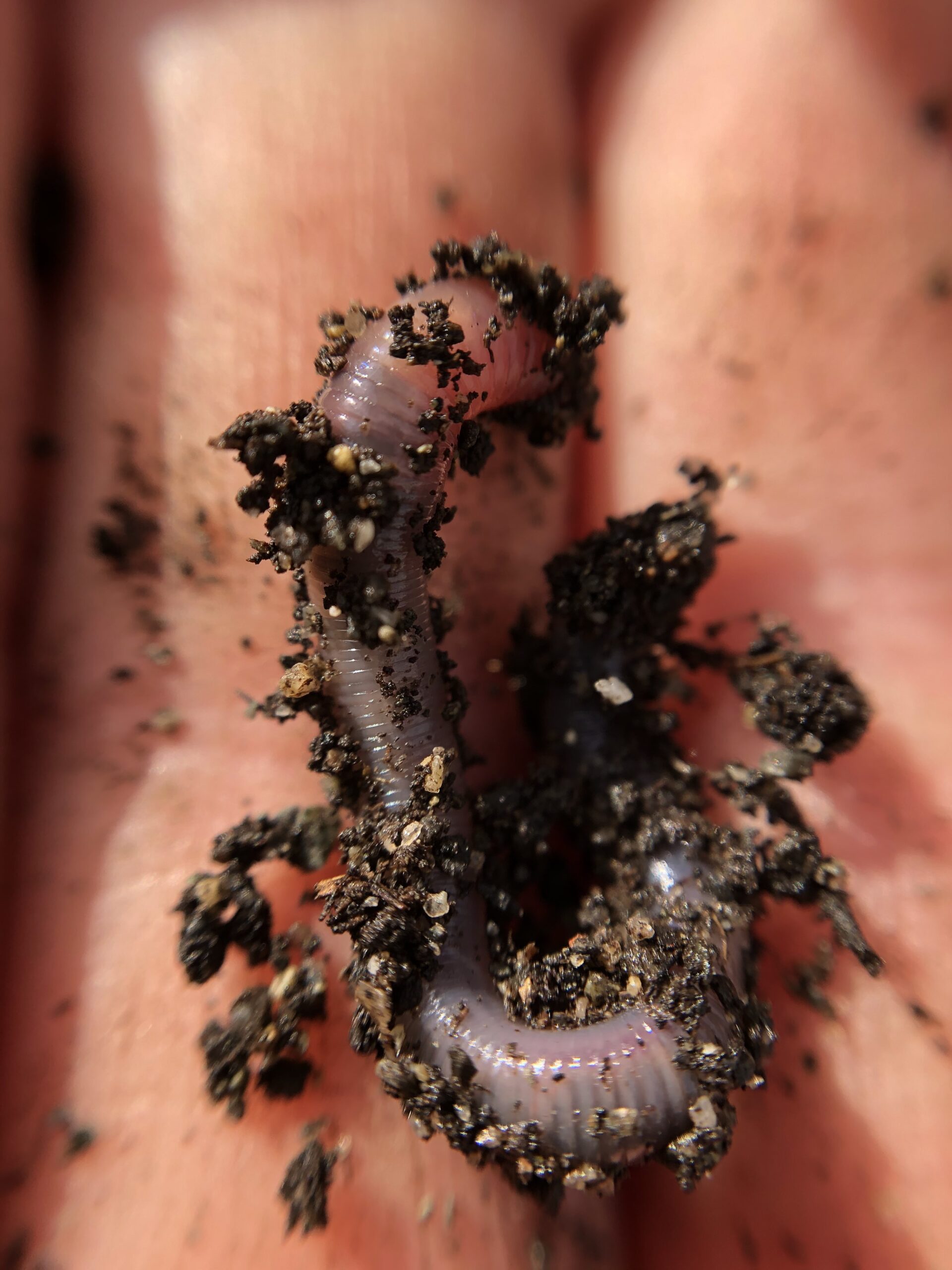
Written by Giorgie DePaolis and photo by Ana Prussia, AmeriCorps Food Educators
L. terrestris, the common earthworm. In Bellingham, we see our red, slithery friend often — on sidewalks during and after a good downpour, in our gardens, and beside urban trails, to name a few spots. A large portion of adult gardeners and farmers appreciate, and even celebrate, the earthworm as a decomposer and a sign of stable soil. Their practical function, however, may eclipse their mysticism in grownups.
The wonder and fascination I associated with worms in younger years resurfaced before my eyes one day in mid-November during our service with the Connections Program. Wild Whatcom worked with Bellingham Public Schools to run the Connections Program this past fall to help 2nd grade – 8th grade families navigate learning during COVID. We partnered with Vamos Outdoors to facilitate outdoors activities with some of these students. Stationed at Shuksan Middle School, my co-lead and I worked with a group of second grade students. We soon realized that facilitating outdoors, COVID-safe activities with students posed a significant challenge as the temperatures rapidly dropped for the winter months. However, this challenge just as soon vanished with the presence of worms.
As one of the students began to kick a puddle of waterlogged soil, my co-lead (Food Educator Jessica V.) and I suggested a different course of action, because worms may be hibernating in the mud. Nearly all of the second graders’ interest piqued at the mention of the revered word: “worms.” Students spent the next hour digging in a nearby sandlot looking for worms. They collected earthworms in piles, shared their attitudes about the wriggly annelids, and gaped their eyes in awe as Jessica recalled scientific facts concerning worms, many of which I did not know! For example, did you know that worms have five hearts? Beyond science, worms also prompted this group of students to demonstrate early social peer education skills: when some students acted in ways that could disrupt or harm the worms, they were gently reminded by their peers to treat the decomposers with respect.
In the bleak of COVID and the cold of November, the love of worms created both color and warmth in the world of children. Watching students create their own color and warmth permeated outward and reminded me to allow myself the brightness of curiosity and play.
